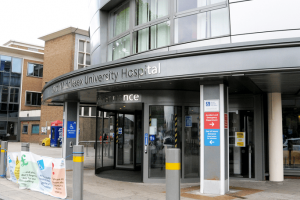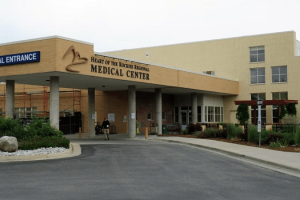Stanford’s three medical organizations this summer unveiled a plan that, for the first time, lays out how they will work together to achieve a shared vision.
With an eye toward leveraging their combined strengths, the entities — the School of Medicine, Stanford Children’s Health and Stanford Health Care — are tapping into opportunities to improve health care locally and around the globe.
The new issue of Stanford Medicine explores the process they undertook to weave an integrated strategic plan, as well as how their vision is playing out in research, education and health care. The process included input from about 4,000 people at the three entities, known collectively as Stanford Medicine.
“Several people who have been here for years have come up to me and said, ‘You know, the School of Medicine and the hospitals have never worked as well together as they are now,’” said Lloyd Minor, MD, dean of the School of Medicine. “And that’s very meaningful to me. That holds promise not just for Stanford Medicine, but for all the lives we hope to improve.”
In a story about developing the unified plan, you’ll hear how priorities were set and how the plan addresses the objectives of being value-focused, digitally driven and uniquely Stanford.
Several articles highlight research that reflects those objectives:
- A palliative care specialist and an informatics expert are using a tool that combines artificial intelligence with medical expertise to help clinicians make more informed and humane decisions about end-of-life care.
- At Stanford’s Precision Health and Integrated Diagnostics Center, researchers use machine learning and assessments of the health of individuals to better understand the impact on them of cardiovascular disease, diabetes, cancer and neurological and mental health. Researchers aim to diagnose diseases earlier and stop them before they cause real damage, but their ultimate goal is to prevent disease entirely.
- Stanford Medicine’s goal for precision health to improve the lives of billions of people around the globe is gaining traction. The approach uses expertise in data science and statistics to pinpoint problems and remedies; uses medical knowledge and economic analysis to improve patient-centered care in a cost-effective way; and draws on technology to bring advanced training and tools to a new generation of medical leaders. Examples include helping develop and improve ambulance services in India and Nepal; efforts to eliminate hepatitis B in China; and a video outreach project that promotes breastfeeding to mothers in South Africa.
- Stanford’s fast-growing drug-development program, SPARK, has given hundreds of academic researchers around the world the training and connections to get their discoveries out of labs and into the hands of doctors and patients.
- Microbiologists and immunologists are developing tools to define and manipulate our gut microbiota in a battle against such disorders as inflammatory bowel disease, obesity and heart disease.
Also in this issue is the story of a professor who allowed research colleagues to analyze the genetic and molecular makeup of healthy and diseased cells from his lungs after he was diagnosed with cancer. The gesture marked the beginning of what could be the world’s largest study into what goes wrong when lung cells become cancerous.
Additionally, the magazine details how a dermatologist’s distant memory of learning about a rare disease helped her diagnose a woman who was nearly bedridden from debilitating pain for almost a year.
Print copies of the magazine are being sent to subscribers. Others can request a copy at (650) 723-6911 or by sending an email to medmag@stanford.edu.
































